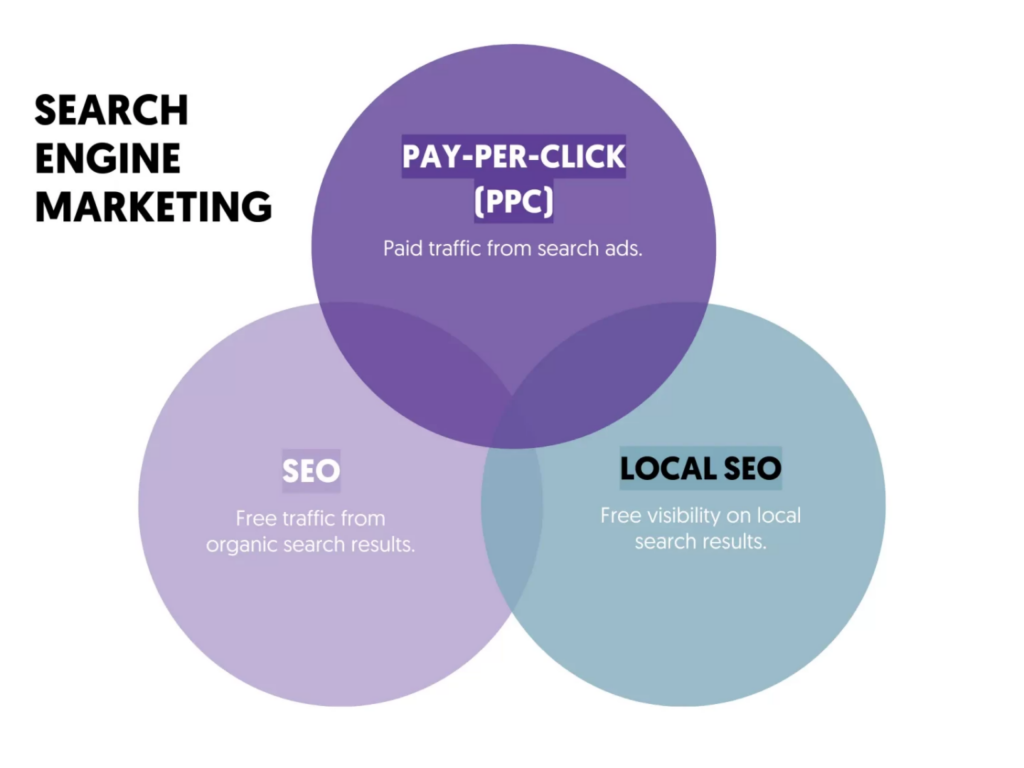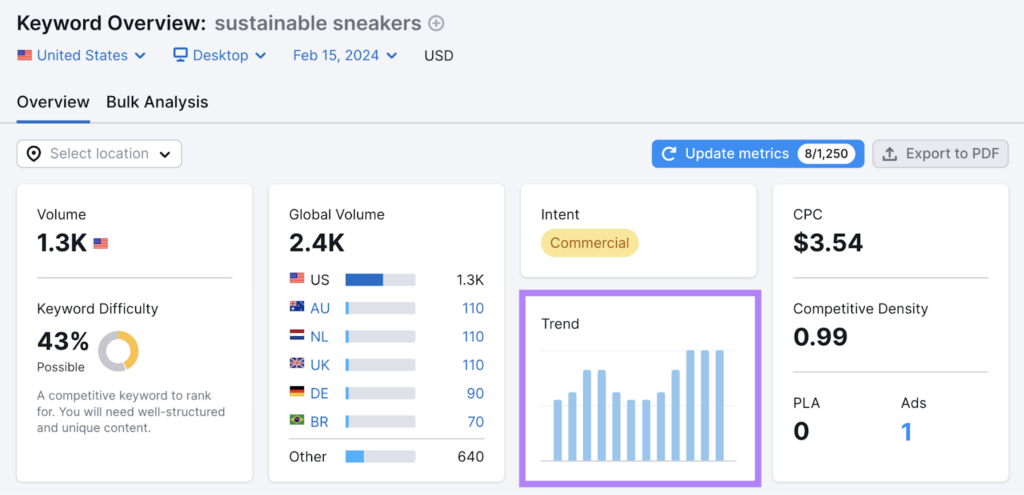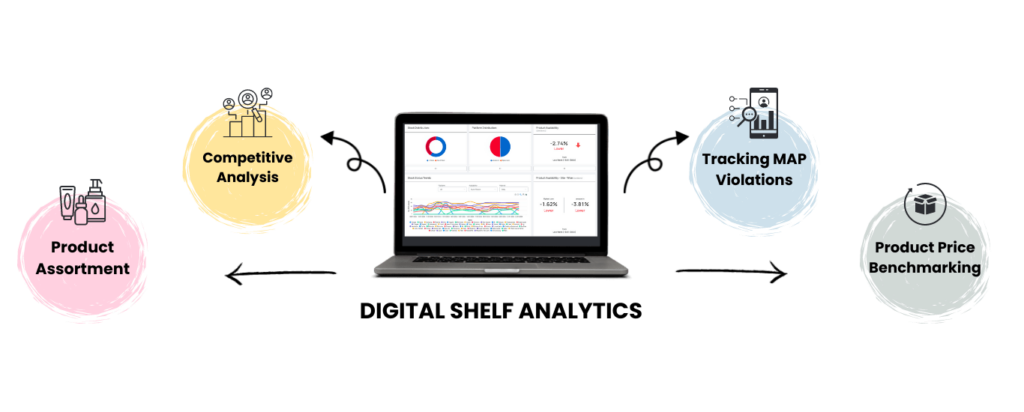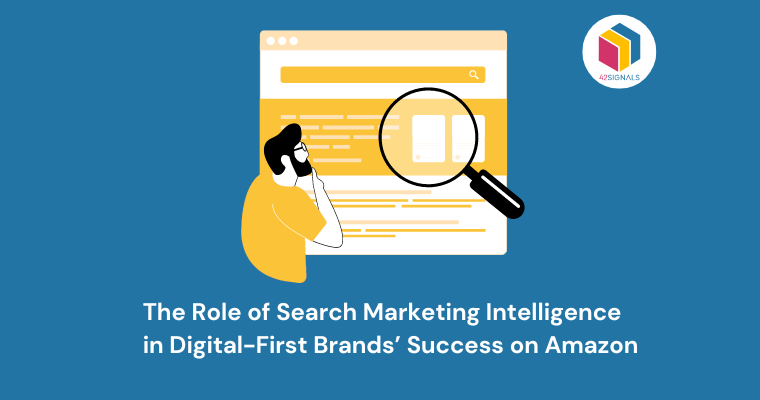One of the most crucial aspects of digital evolution in the past decade has been in the way businesses approach search marketing. Digital-first brands, especially those on Amazon, face unique challenges and opportunities when it comes to getting their products in front of the right customers. Search Marketing Intelligence has become a key driver of success for brands trying to dominate online marketplaces, especially in terms of how they approach SEO, PPC, keyword analysis, and share of search.
Search intelligence plays a significant role in the success of digital-first brands on Amazon and similar marketplaces like Walmart and Etsy.
We’ll also look at how tools like digital shelf analytics and a deep understanding of share of search can make or break a brand’s presence in these highly competitive environments.
What is Search Marketing Intelligence?
Search Marketing Intelligence is the process of gathering and analyzing data from search engines, marketplaces, and competitors to inform digital marketing strategies.

Image Source: Reliable Soft
It goes beyond basic SEO and PPC tactics by combining data-driven insights to improve a brand’s overall visibility and profitability in the digital space.
For digital-first brands operating on platforms like Amazon, search intelligence is a crucial element for maximizing their share of search, improving keyword targeting, and optimizing their PPC campaigns.
With the vast amount of data available on these platforms, this data allows brands to understand market trends, customer behavior, and competitive movements—all of which are crucial for driving sales and increasing market share.
How Search Marketing Intelligence Impacts Success on Amazon
For digital-first brands selling on Amazon, success is often measured by how visible their products are when a customer searches for a relevant keyword. Here are a few examples of digital-first brands –

Image Source: Lumar
Here’s where marketing intelligence becomes invaluable.
By leveraging insights into customer searches, brands can improve their SEO strategies and drive higher traffic to their product listings.
1. SEO on Amazon: Optimizing Listings for Visibility
SEO (Search Engine Optimization) is just as vital for Amazon as it is for traditional search engines like Google.

Image Source: AMZ Scout
Amazon’s search algorithm (known as A9) works slightly differently, focusing primarily on relevance and sales performance.
To succeed on Amazon, digital-first brands must invest in SEO tactics that align with how A9 functions. This includes:
- Keyword analysis: Understanding what keywords customers are searching for is critical. Search marketing intelligence provides insights into the most popular search terms related to a brand’s product. Brands can use this data to update product titles, descriptions, and backend keywords to rank higher for relevant searches.
- Product descriptions and images: High-quality product descriptions optimized with target keywords, combined with detailed images, increase the likelihood of conversion, which in turn boosts search rankings.
- User reviews and ratings: Reviews play a significant role in Amazon’s ranking algorithm. Search intelligence can help brands understand how their products compare to competitors in terms of customer sentiment and ratings.
With accurate SEO insights, brands can better optimize their listings, improving their organic search results and increasing their chances of appearing on the coveted first page of Amazon search results.
2. PPC on Amazon: Smarter Ad Campaigns for Better ROI
In addition to SEO, PPC (Pay-Per-Click) advertising is another essential component of success for digital-first brands on Amazon.
Search intelligence allows brands to create more effective PPC campaigns by identifying the most relevant and high-converting keywords.

Image Source: Seller Metrics
Using advanced keyword analysis tools, brands can:
- Target high-intent keywords: By focusing on keywords that indicate a strong purchase intent, brands can optimize their ad spend and see higher conversion rates.
- Adjust bids for better performance: Search intelligence helps brands monitor the performance of their PPC campaigns in real-time, allowing them to adjust bids dynamically based on keyword performance and competition.
- Track ROI and ACoS (Advertising Cost of Sales): By closely monitoring metrics like ACoS and ROI, brands can ensure that their advertising spend is directly contributing to sales growth. These intelligence tools can provide deeper insights into these metrics, allowing brands to make data-driven decisions on how to allocate their advertising budget.
PPC campaigns can also contribute to a brand’s organic search rankings on Amazon.
The more sales a product generates (whether through organic or paid means), the more Amazon’s algorithm boosts its visibility.
Therefore, combining SEO efforts with intelligent PPC strategies can create a virtuous cycle that increases both paid and organic traffic.
3. Share of Search: Understanding Market Share and Competitiveness
One of the most crucial metrics that search marketing intelligence reveals is the share of search.
Share of search measures how often a brand or product appears in search results compared to competitors for a given set of keywords.
For digital-first brands on Amazon, maintaining a strong share of search is vital to staying competitive.

By monitoring share of search, brands can:
- Identify market gaps: If a competitor is dominating a particular keyword, brands can adjust their strategy to either compete more effectively or target a different set of keywords.
- Measure campaign success: Tracking changes in share of search can indicate the effectiveness of SEO or PPC campaigns. If a brand’s share of search is increasing, it suggests that the campaign is succeeding in driving more visibility.
- Improve product positioning: Understanding where a product stands in the competitive landscape allows brands to make data-backed decisions on product pricing, placement, and promotion.
The use of search intelligence tools to track the share of search is essential not only for brands on Amazon but also on other marketplaces like Walmart and Etsy.
Staying competitive across multiple platforms requires a comprehensive approach to search and marketing intelligence, allowing brands to adapt their strategies to each platform’s unique search algorithm and customer base.
4. Keyword Analysis: The Backbone of Search Marketing Intelligence
Keyword analysis is at the core of search intelligence. It is the process of discovering the keywords and search terms customers use to find products like yours.

Image Source: Semrush
For digital-first brands, performing keyword analysis on Amazon and other marketplaces like Walmart and Etsy is crucial for ranking high in search results.
Here’s how keyword analysis plays into a successful search marketing strategy:
- Understanding customer behavior: By analyzing keyword trends, brands can gain insight into how customers are searching for products, what language they are using, and what features or benefits are most important to them. For example, a customer might search for “organic dog food” or “grain-free dog food,” signaling different product preferences.
- Competitor benchmarking: Keyword analysis also allows brands to benchmark their performance against competitors. By identifying which keywords competitors are ranking for and where your brand is falling short, brands can refine their SEO and PPC efforts.
- Targeting long-tail keywords: In addition to focusing on broad, high-traffic keywords, successful brands often target long-tail keywords—more specific, less competitive search terms that tend to have higher conversion rates. Search marketing intelligence tools provide insights into these less obvious keywords, helping brands capture highly targeted traffic that is more likely to convert.
- Adapting to seasonality: Customer search behavior often changes with seasonal trends. By analyzing historical keyword data, brands can anticipate these changes and adjust their marketing efforts accordingly, whether through promotional campaigns, product launches, or optimized listings.
Keyword analysis on platforms like Amazon, Walmart, and Etsy helps digital-first brands stay ahead of the competition by constantly refining their visibility and relevance in search results.
A well-executed keyword strategy ensures that a brand’s products are discoverable by the right customers at the right time.
5. Digital Shelf Analytics: Enhancing the Online Shopping Experience
Digital-first brands must also pay close attention to their digital shelf—the online equivalent of how products are displayed and marketed in a physical store.

The concept of digital shelf analytics encompasses all the factors that contribute to a product’s online presence, from how it appears in search results to how it is perceived by customers through ratings and reviews.
Digital shelf analytics is a powerful extension of search and marketing intelligence because it allows brands to:
- Monitor product placement: Just like physical store placement can impact sales, digital shelf positioning is critical for online success. By analyzing product rankings in search results, brands can ensure their products are prominently displayed and adjusted if necessary.
- Analyze pricing strategies: Pricing is a key element of the digital shelf, and search intelligence tools help brands track competitor pricing and adjust their own strategies to stay competitive. If a competitor drops their price for a similar product, your brand needs to know about it to maintain sales velocity.
- Track customer engagement: Digital shelf analytics includes tracking customer reviews, ratings, and questions. Positive reviews can boost a product’s ranking, while negative feedback can hurt its visibility. By leveraging these insights, brands can improve their product offerings and customer satisfaction, further enhancing their SEO performance on platforms like Amazon.
Digital shelf analytics goes hand-in-hand with keyword analysis and share of search data to create a holistic view of how a product is performing on an e-commerce platform.
Together, these insights allow digital-first brands to refine their strategies and improve their overall digital presence.
Search Marketing Intelligence Beyond Amazon: The Multichannel Strategy
While Amazon is a massive marketplace and often the primary focus for digital-first brands, it’s essential to recognize that search intelligence is just as important for other platforms like Walmart and Etsy.
Each marketplace has its unique search algorithm and customer base, so brands must tailor their SEO, PPC, and keyword strategies accordingly.
Here are a few points to consider for each platform:
- Walmart: Walmart’s online marketplace is growing rapidly, and brands need to invest in search intelligence to compete effectively. Walmart’s search algorithm prioritizes relevance, product availability, and price. By leveraging insights from keyword analysis and digital shelf analytics, brands can improve their rankings on Walmart and capture a larger share of search.
- Etsy: Etsy is a niche marketplace where customers often search for handmade, vintage, or unique products. Here, keyword analysis plays a critical role in helping brands tap into highly specific search terms that resonate with Etsy’s unique audience. In addition, digital shelf analytics helps brands optimize their product listings to stand out in a more curated environment.
- Other Marketplaces: Platforms like eBay, Target Plus, and Shopify each have their nuances, and a brand’s ability to perform keyword analysis, track share of search, and utilize digital shelf analytics will determine their
Conclusion
For digital-first brands, success on Amazon and other marketplaces is heavily dependent on search marketing intelligence.
Brands must adopt a data-driven approach that combines keyword analysis, share of search tracking, and digital shelf analytics to optimize their visibility, drive traffic, and increase sales.
If you are curious to see how a digital shelf analytics tool can serve your brand, don’t hesitate to schedule a demo today.




